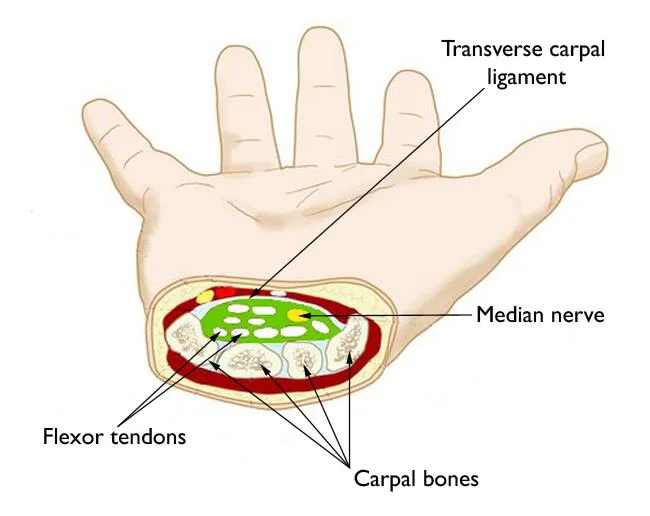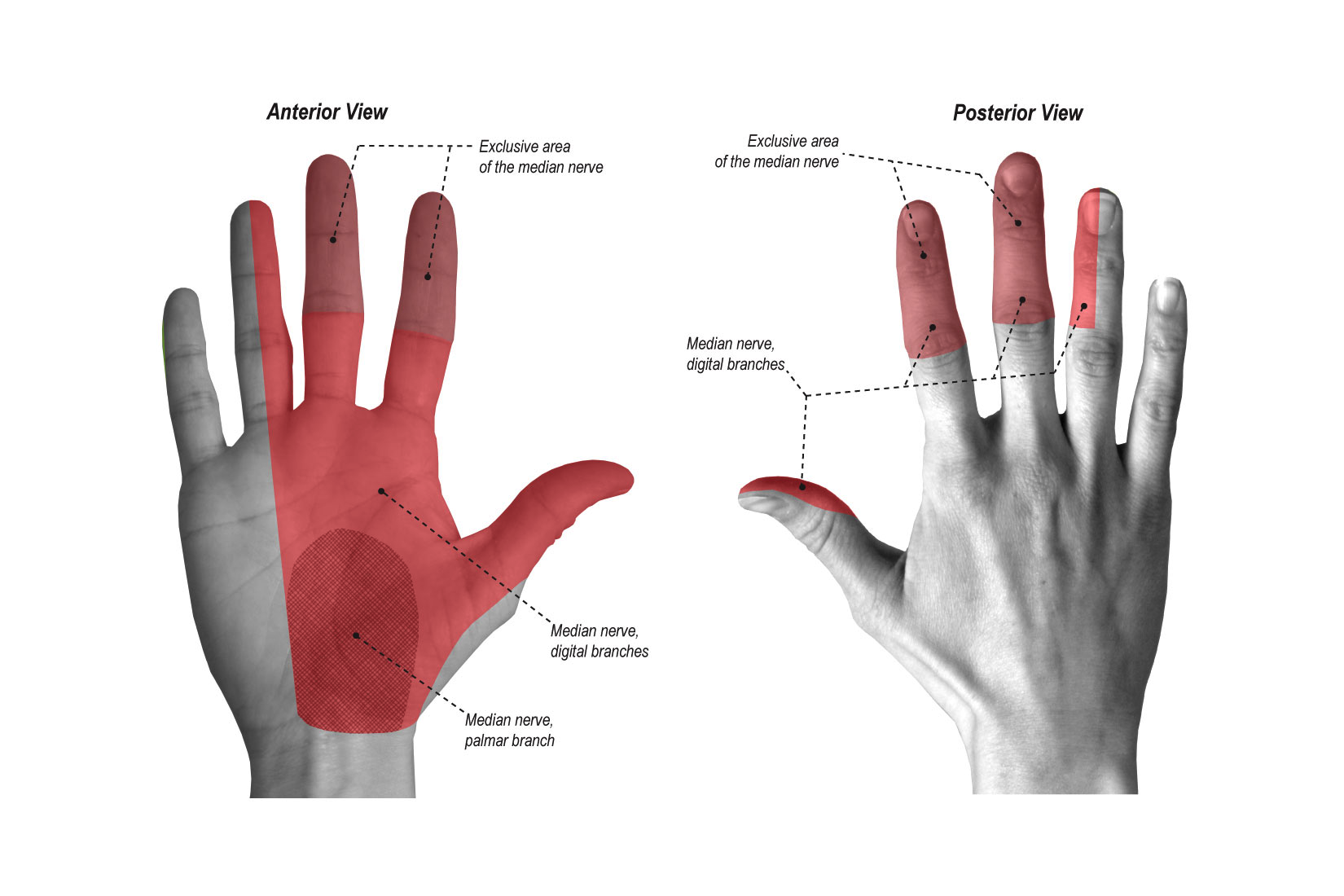Tunnel of Numb
What exactly is the carpal tunnel?
The carpal tunnel is a tunnel created by your wrist bones (carpals) and the flexor retinaculum (a fibrous band of tissue that keeps your flexor tendons in place). It’s actually fairly large. Large enough that in cadaver lab you can put your index finger through it.
What goes through the carpal tunnel?
Nine tendons. The tendons are for the muscles that allow you to curl your fingers or to make a fist (flexor tendons). And, the median nerve.
What does the median nerve do?
In the forearm the median nerve innervates a lot of the flexor muscles. In the hand the median nerve innervates mostly the thumb muscles. The most important function for this article, though, is the sensory distribution, which is illustrated below:
What are some of the symptoms of median nerve irritation?
Numbness / pain / tingling in the index finger, middle finger and thumb.
It is very important to note that if you have tingling in your index and pinky finger it is NOT caused by carpal tunnel syndrome. Those fingers are supplied by the ulnar nerve which does NOT go through the carpal tunnel.
Sadly, I have had two patients that had carpal tunnel surgery when their symptoms were in their pinky and index finger. Not surprisingly, the surgery did not resolve their symptoms.
Another important note: if you have weakness in your hand or grip, then you should see a neurologist as soon as possible. Muscle weakness is beyond the scope of this article.
So if my thumb and index finger are numb then I have Carpal Tunnel Syndrome?
Not necessarily. The median nerve does not just magically appear in your hand. It starts way up in your neck, and travels a very long path to get to your hand. In anatomical illustrations the nerves look very obvious, but in a living human body (or cadaver) you can see how many structures the nerve has to dive under, over, and around. There are a lot of places for the nerve to get a bit restricted or hung up. The carpal tunnel is just one of them.
How do you treat numbness and tingling in the thumb and index finger?
I always like to start with the most obvious and easy fix. Releasing all the muscles along the path of the median nerve: scalenes (in your neck), pec minor and coracopectoral tunnel (the front of your shoulder), ligament of Struthers (at your elbow), pronator teres (a very common spot for the nerve to get entrapped), flexor digitorum (much of what we do during the day involves gripping so this is another common spot), the carpal tunnel, and the thenar (base of the thumb) muscles. For this I use the Active Release TechniqueⓇ protocols.
Patients are also instructed in nerve flossing. But wait, you’re not a dentist! Lame jokes aside, nerve flossing is actually quite important. The nerve needs to be able to slide back and forth along its path in order for you to have full range of motion in your arm. If there’s a spot where it’s not gliding smoothly then the nerve will keep getting irritated.
Another technique that I’m using more and more is Neural Manipulation from the Barral Institute. It’s quite gentle and I have found it particularly useful for entrapments that occur further up toward the neck and shoulder.
It’s also important to help patients figure out what movements or positions might be contributing to the irritation of the nerve.
In Summary
If you are starting to have numbness or tingling in your thumb / index finger then now is the time to get it checked out. It’s not good to let nerve symptoms go too long, so don’t wait until things have gotten worse or wait until they are occurring more frequently. Additionally, nerve irritation can be a sign of something more serious than what is addressed in this article, so please do not procrastinate on a diagnosis and treatment.



